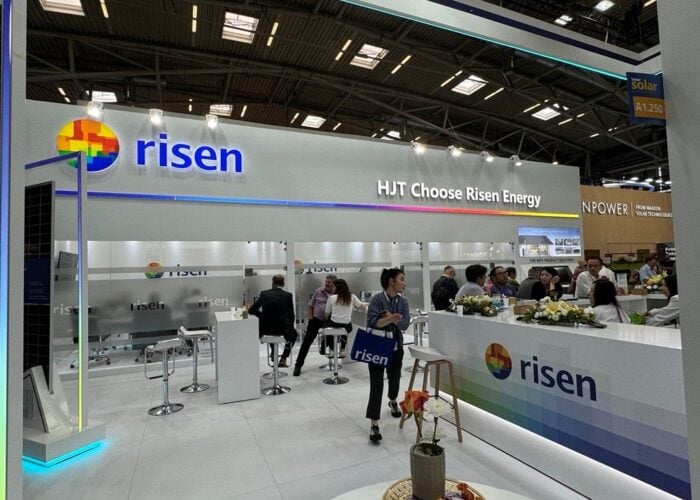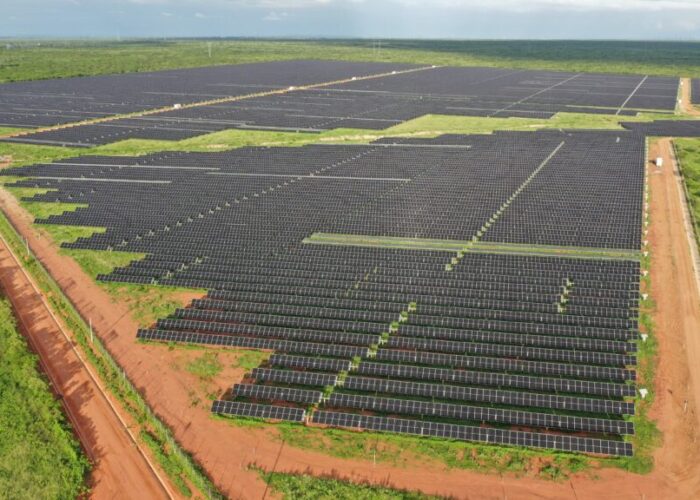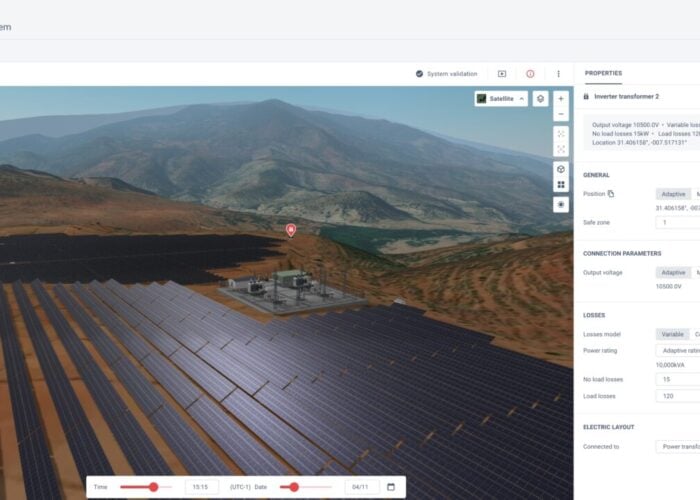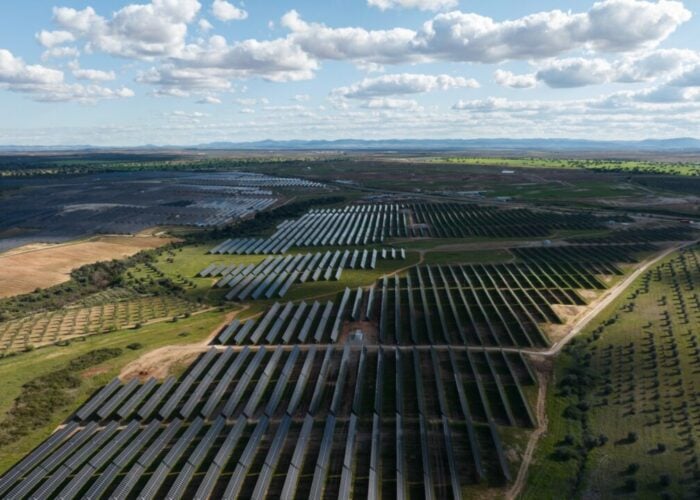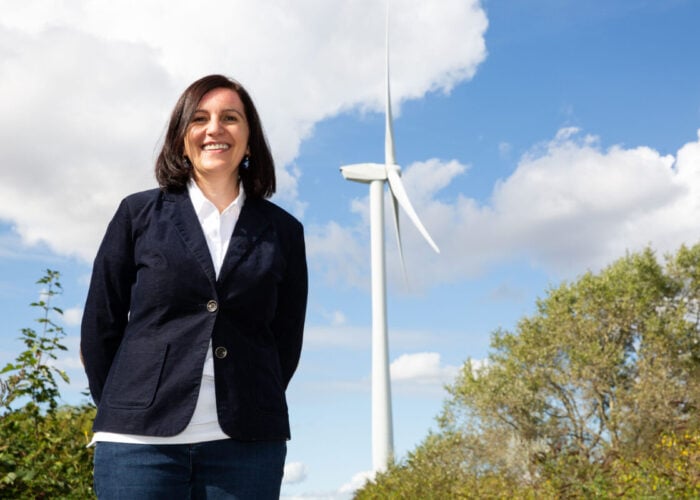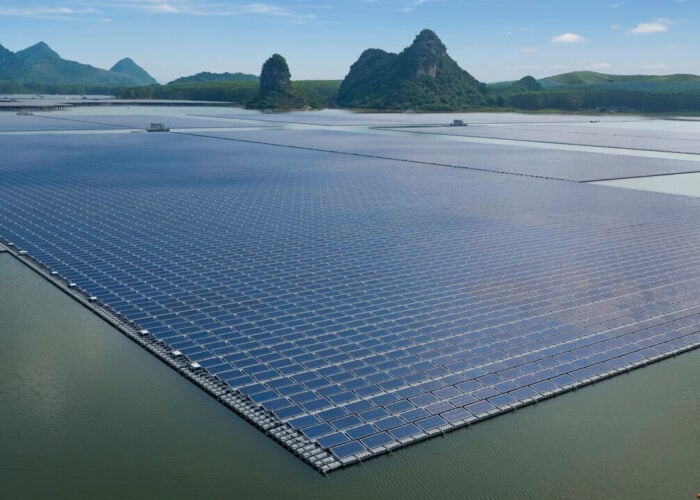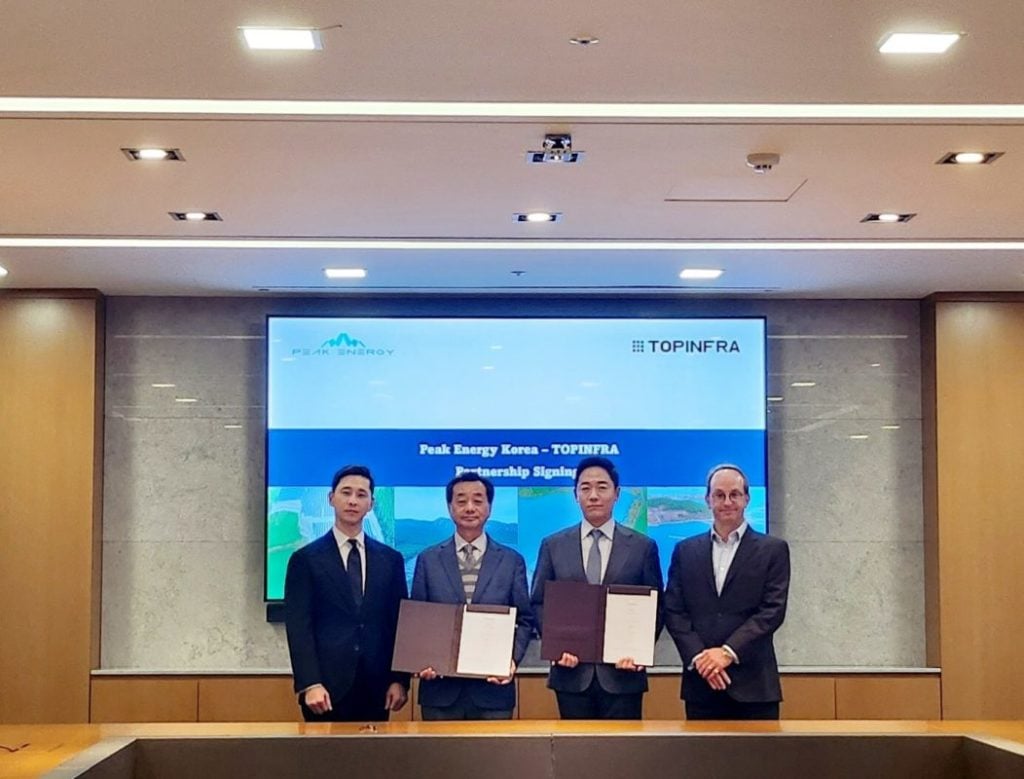
US renewables platform Peak Energy and Korean clean energy developer TOPINFRA have launched a joint venture that aims to develop more than 500MW of solar and battery storage capacity.
Peak Energy is a subsidiary of US investment platform Stonepeak, and has announced that part of the joint venture’s work will consist of a 70MW solar portfolio, some of which is in operation and some of which is under construction, in Korea.
Unlock unlimited access for 12 whole months of distinctive global analysis
Photovoltaics International is now included.
- Regular insight and analysis of the industry’s biggest developments
- In-depth interviews with the industry’s leading figures
- Unlimited digital access to the PV Tech Power journal catalogue
- Unlimited digital access to the Photovoltaics International journal catalogue
- Access to more than 1,000 technical papers
- Discounts on Solar Media’s portfolio of events, in-person and virtual
“Peak Energy is focused on working with the best, long-term partners that we can find,” said Peak Energy CEO Gavin Adda. “We are very pleased to launch this joint venture with one of the top independent developers in Korea.”
While the developers did not specify where the remainder of the 500MW of capacity would be located, Peak Energy now boasts a 170MW solar portfolio in Korea, and the company made note that its work would help deliver “future renewable energy developments across Asia”. The news follows Stonepeak’s sale of distributed solar develop Madison Energy Investments in December 2022, and the partnership with TOPINFRA could suggest a refocusing of the company’s efforts to the Asian market.
The timing of the new joint venture is perhaps surprising, as the South Korean solar market is not expected to maintain its rate of growth in the coming years. The country has historically been one of the largest solar markets in the world, with SolarPower Europe’s latest global report noting that there was 24.3GW of solar capacity installed in South Korea by the end of 22, ninth-most in the world.
However, the trade body notes that the government’s lowering of its renewable energy production targets – from 30.2% of the total energy mix to 21.6% of the total energy mix by 2030 – has shaken confidence in the country’s solar sector.
SolarPower Europe now expects South Korea to add the 14th-most new capacity in the world between 2023 and 2027, adding 16GW in its medium scenario, the one it considers to be the most likely. This compares to the 17GW that the body expects Taiwan to add over the same period, and the 15GW it expects the UAE to add until 2027.
However, other companies have made investments into the South Korean solar sector, such as local manufacturer Qcells, which committed US$100 million to a new perovskite pilot production facility in the country in May.

